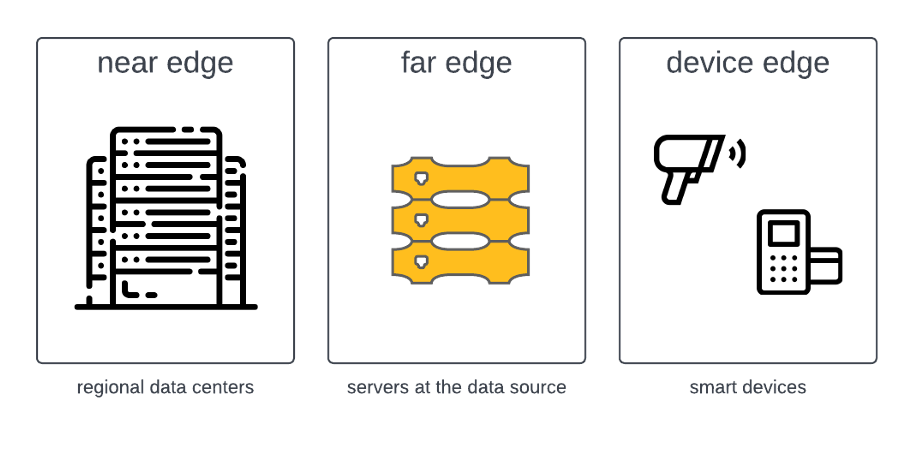What is the edge?
Corporate technology leaders and software vendors alike are facing a daunting fact: not all enterprise software will be able to run in the cloud. The cloud must be augmented with edge computing.
Basic definition
What is edge computing? It should be a straightforward answer. Unfortunately, a lot of vendors are adopting the name “edge” for their products, even when it is not really applicable. That has created some confusion. We will try to cut through that confusion. The most basic definition is:
Edge computing is the computing that is not in the cloud or the data center.
That is a start, but it leaves a lot of questions. Is my laptop edge computing? What about my smartphone? What about the internet of things? Is the fancy smart thermostat in my house edge? I hear people refer to regional data centers as “edge”. Is that right?
Different edges
To answer these questions and to differentiate the elements of edge computing, industry has settled on three terms: near edge, far edge and device edge.
Near edge means anything using 19 inch rack mounted equipment for edge computing. Rack servers are the big pizza box servers that go in data centers. So, a data closet or small server room would be considered near edge. Some data centers are branding themselves as “near edge.” Perhaps the big server companies named it near edge because it is near and dear to their heart. They love their rack mounted form factors.
Device Edge is all those smart things out there, the internet of things (IOT). Every new piece of equipment has a computer in it, and that computer has software. The computers in these things get more and more powerful, and the data they generate gets larger and larger. But they are always just the one thing.

Which brings us to the third type of edge, far edge. Or what we at Edgecell refer to as “real edge” or simply edge. Far edge is servers that run outside of a data closet or data center, as close to the source of the data as possible.
Historical context
To gain clarity, we will extend our definition of edge a little further. To do so, we need some historical context.
When computers first arrived in the 1950s, they were giant, centralized monsters. Mainframes, the descendants of these first computers, are still with us to this day. They had lots of users, central management of resources, sophisticated software deployment update processes, thin clients. That sounds a lot like cloud, does it not?
Starting in the 1970s, a process of decentralization began, starting with mini-computers and eventually leading the personal or desktop computer. How we built and deployed software for PCs was very different than mainframes.
Starting in the 1990s, the pendulum started to swing back again. We evented client server architecture for enterprise applications, and then three-tier architectures. Applications moved from the desktop to the closet server and then to the data center. Nevertheless, the processes for building and deploying software were still nearly the same as those created for PCs.
With the advent of the web, the consolidation accelerated. With the advent of cloud computing, the consolidation was nearly complete. In particular, the development and deployment of software was now very different. Microservice architecture and continuous integration, continuous deployment (CI/CD) were simply impossible in the 1990s but now industry standard practices.
Now we are seeing the pendulum swing back the other direction again. Eventually, edge computing will be bigger than the cloud, just as desktop computing was bigger than mainframes decades before.
More accurate definition
Which brings us to a more accurate definition. Edge computing is not a return to closet servers like we had in the 1990s. I hear companies say all the time, “We have been doing edge for years.” No, you have not. You have been doing pre-cloud computing for years. It is not the same thing at all.
A more accurate definition is:
Edge computing is the computing that is not in the cloud or the data center but is managed and monitored with tools and processes like those used in the cloud and data centers.
In this handbook we will explore the details and implications of this definition in detail.